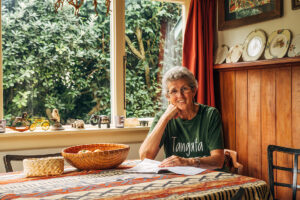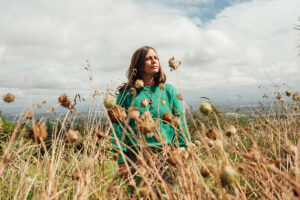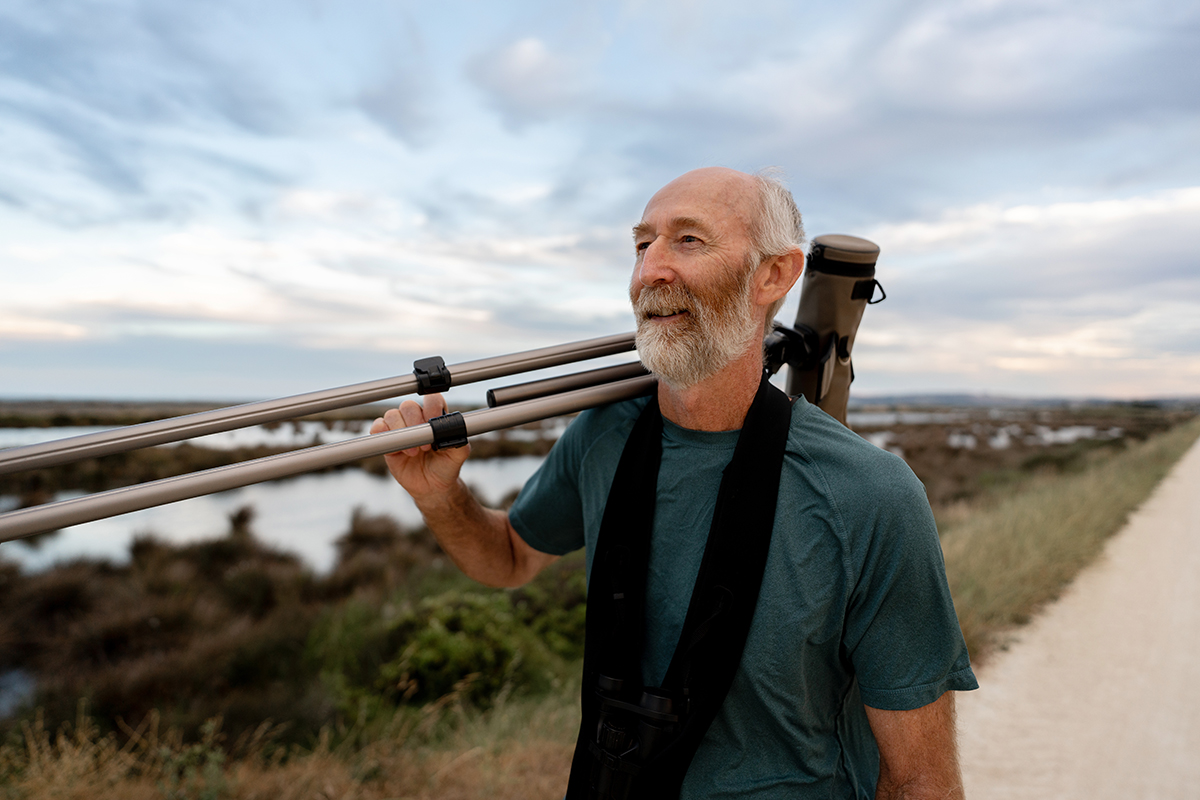Climate change, soil and biodiversity loss, freshwater injustice – where we live just south of Hastings, the planetary crisis is an insistent, everyday awareness.
For my 15-year-old especially, it’s a hard burden to bear. He cannot understand why we all carry on as if nothing is happening, while for him it’s so obvious that everything must change.
Our individual actions alone will never be enough, while governments it seems are not up to the task. But in the interstitial space of community, local councils, business, galvanising gains are being made, and it’s here I went searching for inspiration and answers as to how best to focus the wasted energies of personal overwhelm and gloom into empowering, effective action.
As part of what will be a bigger body of work than what I planned to feature here, I interviewed ten ‘environmental advocates’ in Hawke’s Bay. Ten people who are working in diverse and collaborative ways to bring forth a healthier, future-liveable world: giving voice to, interceding on behalf of, and facilitating relationships with the environment, te taio, that contains and surrounds us.
I asked them to speak about their work; to share their views on what matters most and what they believe are critical actions for change, as well as what gives them hope; and their tips for taking action.
As Dominic Salmon of 3R Group says, “you can’t change anything unless you participate”, so do take note of their collective advice, distilled into a citizen guide for making change.
The three portraits that follow are offered as an opening glimpse into the work and wisdom of some of these ‘voices for our environment’ – those who have already been doing the mahi for years.
Bernie Kelly: bird ‘enthusiast’ and citizen scientist
From Clive River mouth, where we’ve been watching oyster catchers tend to their chicks westside of the channel, Bernie Kelly, ecology ‘enthusiast’ and regional rep of Birds NZ Hawke’s Bay, points out a small, wetland area to the east. “Spotless crake are a signature bird. If you’ve got that bird in your wetland, that’s a good indicator. Well, I’ve got them over there, and marsh crake too.”
Banded dotterels, blackbacked gulls, white-fronted terns, bitterns. Bernie is continually monitoring the water birds in his neighbourhood, and at Ahuriri and Porangahau, logging data counts into an atlas portal on the eBird app, working with others on the wader census – the longest-running citizen scientist project in New Zealand, conducting twice-yearly census surveys, laying traps for predators. That’s in his spare time, when he’s not up at Boundary Stream as a DOC ranger, working with a team at the most inland seabird translocation site in the country, bringing regionally-extinct seabirds back to the area.
He likens bird-spotting to being a modern-day explorer, “If you’re lucky you can be on the frontend of things. Be up in the Maungaharuru ranges and hear the first Cook’s petrel to be heard in 300 years. Or be the first to record evidence of royal spoonbills nesting in the north island – that’s the exciting part!”
But what motivates him at the heart of it, is simply “ecology” – “you can’t have birds without the right habitat, you have to protect or create it.”
Concerned about a proposal by the Regional Council to dredge the Clive riverbed, essentially to create more access for power boats to “bang up and down” to the detriment of the estuarine ecology, he’s lodged a submission against it.
“To me, this is like a wildlife reserve. I am always trying to advocate for it.” He is pragmatic about the fact such areas of environmental sensitivity border areas of urban living, and he’s not into banning people from recreation, but believes we could all do a little less of the things that have impact, while “going in to bat” for the world we enjoy.
Concerned about a proposal by the Regional Council to dredge the Clive riverbed, essentially to create more access for power boats to “bang up and down” to the detriment of the estuarine ecology, he’s lodged a submission against it.
“To me, this is like a wildlife reserve. I am always trying to advocate for it.” He is pragmatic about the fact such areas of environmental sensitivity border areas of urban living, and he’s not into banning people from recreation, but believes we could all do a little less of the things that have impact, while “going in to bat” for the world we enjoy.
Marilyn Scott: grassroots environmental stalwart
Marilyn Scott doesn’t give up, but she’s “just a bit sick of writing submission after submission … to regional councils, city councils, and definitely to government” while “miniscule progress” is made.
She’ll continue writing them, of course, just as she will continue writing letters that won’t get published to newspaper editors and to supermarkets and companies that fob her off. It’s what she terms the second, thankless, level of advocacy, and she will do it because “the planet’s a mess and it’s human arrogance that made it” and if enough people speak out it might build a groundswell.

We’re sitting at her kitchen table surrounded by the evidence of her first-level labours: jars of homemade pickles and relish, sourdough bread rising on the bench, a profusion of flowers, fruit trees and vegetables in the back garden. “Environmental advocacy starts with ourselves – challenging the consumerism and throw-away society we live in.” But ultimately, it’s about collaboration and cooperation, moving beyond “parallel lines and silos” to take it next level.
Marilyn was the local Green Party co-convenor for a number of years and is busy at any time in any number of grassroots environmental projects (beach clean-ups, litter audits, Save the Dotterels), organising volunteers, rallying councils, getting things done (often) in spite of them. “When you find there’s a barrier, or when you find yourself picking up the pieces, you need to look for an ally. Often that’s the coalface worker, the person picking up rubbish for the council who’s usually the last to be consulted on what’s needed to fix a waste problem.”
At the overarching systems level, Marilyn supports Moana Jackson’s initiative for constitutional change, “I really believe that if we had a different form of government in our country, where there was a rightful place for tangata whenua, then tangata tiriti – those of us who are here by virtue of the Treaty – would be well served… I really believe that those fundamental values that underpin indigenous cultures, like te ao Māori, would make such a difference.”
In the spirit of genuine, bicultural partnership, she’s currently enrolled in a Level 5 immersion te reo Māori course.
“I don’t have all the answers, I just know I want to do the very best I can in the time I’ve got to make a difference.”
Tyne Nelson: healing Papatūānuku
I meet with Tyne Nelson at Te Mata Peak in soft constant rain, in the small, somewhat overgrown area just below the middle car park. It’s the place where pines once stood, now gradually being seeded with native medicinal plants that will in time become a forest.

Tyne (Ngāti Kahungunu, Ngāti Hine), who learnt alongside renowned rongoā practitioner Robert (Pa) McGowan for many years, is the rongoā leader for this nascent, indigenous healing ‘garden’, intended as a wānanga site and a place of connection, restoration, nurture.
“The way I understand rongoā, this is a huge opportunity to give it its full breadth. Instead of just teaching people what to remember (this plant does that), it’s teaching people skills on how to observe and learn for themselves … from the source.”
In Hawke’s Bay, as she points out, our remnants of native bush are few and far between, the ngahere not easily accessible. For many Māori, “We’re tangata whenua but without any whenua to go
to … it’s hard to practise our culture. For Heretaunga/Tamatea whānau in particular, there’s a lot of grief.” But, “We all connect to this place, those of us who live here, it’s quite prominent, and it’s nice for people who love this place to also give back”.
At the heart of environmental advocacy, she believes, is the need for building relationships.
“If you advocate on anyone’s behalf, you are speaking for them, so you have to have a relationship first, you have to listen to those you are serving, being that bridge.” Likewise, “We need to make sure we’re rekindling our relationship with our rivers, our land, if we’re to advocate for them.”
“I believe the land literally speaks to us, but we have to actually be there, on the ground, and be present and open to hear what it’s telling us. We need more opportunities for people to do that, to build that direct connection, so when we’re there at council advocating, we can feel it in our bones.”
The development of the rongoā garden is a very organic process – “We take it month by month”, with regular, respectful discussion and input from a diverse range of people and volunteers, including the Park’s trustees, pooling skills and experience. This allows for experimentation and for figuring out a different, more holistic way of doing things, to watch and respond to what’s happening, rather than taking an “elbow-reflex way of management”. The hope is that there will be lessons learned for the wider park and for other places in Hawke’s Bay.
Along with establishing Te Mata Peak’s Rongoā area and caring for her babies, Tyne is studying a bachelor of science (environment and communication). Systemic, infrastructural change is what’s required, and “I want to be that bridge.”
For more on Te Mata’s community rongoā group, Te Roopu Puke Atea of Te Mata Peak (all welcome), see: www.facebook.com/teroopupukeatea/
How to effect positive environmental change
Do the things you can individually to make a difference – every little bit counts but it’s also about personal integrity, doing what feels right.
• Foster relationships with the non-human world by observing, listening to, being with, whether in your backyard, local park or the great outdoors: it will grow both your affinity to place and your understanding of what’s required.
• Speak up: talk with people; contact the media; pester companies about their product stewardship; write an article, a letter, a Facebook post.
• Do what moves you (plant trees, campaign for better public transport, care for creatures, become a citizen scientist, sort e-waste, help build resilient communities) – everything’s connected, so any action is an entry point, a contribution.
• Connect with others doing similar things to grow momentum, be more effective and to share the load: join a community group; participate in a workshop; exchange homegrown produce; start a local campaign.
Examine your own cultural biases, take a course on Te Titiriti.
• Engage with your local councils: pick a councillor and ask to meet them for coffee to talk about your concerns (they’re your elected representatives, even if you are too young to vote); make a submission (if you’re not into writing, try via video); attend a meeting; take up an issue.
• Vote for those who understand the need for change.
• If necessary, blockade.
Photos: Top, Tom Allan. Others, Florence Charvin


Love these profiles of people who protect nature!!